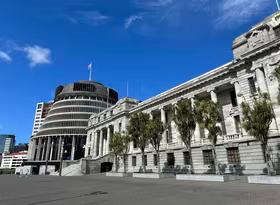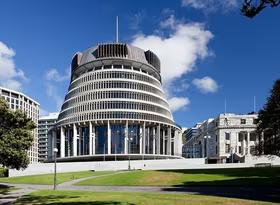The rising importance of public sector jobs
In recent years growth in public sector jobs has far outpaced overall employment growth, with the change in government in 2017 seeing a new direction set for agencies serving New Zealand.
This trend of a growing public sector has been even more pronounced since COVID-19 has hit, with even more jobs as agencies increase their capacity to support their operations, and new entities grow.
Although Wellington has done well out of this public sector growth, a more regional focus has also boosted employment more generally across the country. One clear observation is that the public sector is both larger and more spread out across New Zealand – highlighting opportunities for some areas, and challenges for others.
Over the last 20 years, the broad “public administration and safety” industry has seen employment grow by 3.2%pa on average – ahead of the 1.9%pa average increase in total filled jobs. In recent years, public sector employment growth has accelerated, with Infometrics estimates for the March 2020 year showing a 7.1%pa increase, and the resulting 8,806 job increase being the largest contributor to jobs growth in the 2020 year.
This boost in public sector jobs over time has seen the public sector rise in importance, with the sector moving from being 3.98% of total employment in 2000 to 5.12% in 2020 (see Chart 1).
The COVID-19 pandemic has seen the public sector expand to meet the rising needs of the country, with new and larger tasks coming to hand.
Overall, the additional requests on government have helped drive public sector employment further up, with the industry having the third-largest increase in filled jobs in December 2020 compared to a year earlier (see Chart 2).
Healthcare and social assistance (8,816) and construction (8,563) saw the largest increases in filled jobs in December 2020 compared to December 2019, followed by the public administration and safety industry with 7,630 additional roles.
Helpfully, the Public Service Commission provides a fine breakdown of the change in parts of the public sector workforce, allowing for an examination of how government departments have changed (see Chart 3).
Some notable changes over the past year include:
- The Ministry of Social Development (MSD) has seen the largest rise in employment, with over 1,000 additional workers as more support has been required for employers’ support and beneficiaries
- Oranga Tamariki has seen the second-largest increase of 609 workers.
- Additional requirements have seen the Ministry of Business, Innovation, and Employment (MBIE) add over 500 roles as their tasks expanded to coordinating Managed Isolation and Quarantine facilities and standing up an increased labour market focus with new Regional Skills Leadership Groups (RSLGs) and more.
- Additional workloads in the wider justice sector have seen 510 additional jobs at the Ministry of Justice, and 351 more at the Department of Corrections.
- Bucking the trend, new IT infrastructure has seen the Inland Revenue Department (IRD) cut their staff numbers by 164 over the last year.
Note that although employment has also increased to manage the health impacts of COVID-19, with track and trace workers and more, many of these roles are covered under the healthcare and social assistance category. This healthcare and social assistance is a mix of public and private sector organisations and isn’t included in our analysis of the “public administration and safety” industry.
Wellington City is well-known as the home of government, with ministries, departments, and agencies radiating out around the Beehive. The public sector is important to the city, contributing 17% of total employment (much larger than the 5.1% share nationally).
However, in recent years public sector employment has been spread out more than before. Examining the detailed “Central Government Administration” industry*, the employment concentration in Wellington has dropped to its lowest in 20 years. Of all Central Government Administration sector employees in 2020, around 40.5% were located in Wellington City – down from the 45% 20-year average (see Chart 4).
Recent increases in public sector employment have helped to boost employment across many parts of New Zealand. However, some areas have seen larger boosts. Comparing the share of Central Government Administration employment in an area in 2000 vs 2020, five areas show an increase of 0.5 percentage points (pp) or more:
- Palmerston North, with a 1.8pp increase, from 1.2% of total employment in 2000 to 3.0% in 2020.
- Hamilton, with a 1.1pp increase from 4.2% to 5.3%
- Auckland, with a 0.7pp increase from 17.5% to 18.2%
- The Far North, with a 0.5pp increase from 0.3% to 0.8%
- Napier City, with a 0.5pp increase from 0.9% to 1.4%.
Wellington City remains a key part of the public sector headquarters, with employment growth of 7.3% in the year to March 2020. It’s just that other places are also seeing advances in public employment. The strength in public sector employment has bolstered Wellington City’s jobs market since COVID-19 hit, with the city recording the second highest rise in filled jobs (by absolute number of jobs) in December 2020 of all local council areas, according to detailed filled jobs figures.
However, as our analysis suggests, there are changes coming to the public sector, with the Government already musing about “regional hubs” and the State Services Commission looking to “reduce the footprint” of government workers in traditional areas.
Increased potential for working from home, greater affordability in the regions (both for residential and commercial premises), and lifestyle considerations means that more of the public sector workforce might be spread across New Zealand in years to come. But Wellington’s place as the capital, and with rapid access to core parts of the machinery of government, means the city will retain a commanding position on public sector employment – just not as much as previously.
The changes to central government agencies delivery, more flexible working arrangements, and a more dispersed employment objective, will provide opportunities for regional parts of New Zealand to boost the levels of public sector employment they can attract and retain. We expect increasing conversations, and possibly some competition, to bring public entities to local areas as public sector employment remains a larger workforce in search of more homes.
* Central Government Administration excludes some public sector employment like Police and Justice workers (who are spread across New Zealand to be operational in all areas), and Correctional and Defence Services (which are based on physical sites like prisons and military bases). The industry focuses more on central operations, but also includes workers like regional MSD, Education, Primary Industries, and other staff.








